This collection consists of short (2-5 minute) introductory videos on neuro-ophthalmological condition pathophysiology, diagnosis and treatment modalities by Dr. Andrew Lee.
Andrew G. Lee, MD, Professor of Ophthalmology, Weill Cornell Medicine; Chairman, Department of Ophthalmology, The Methodist Hospital, Houston, TX; Adjunct Professor of Ophthalmology, Baylor College of Medicine; Adjunct Professor of Ophthalmology, University of Iowa Hospitals and Clinics and the University of Buffalo; Clinical Professor of Ophthalmology, Department of Ophthalmology and Visual Sciences, University of Texas Medical Branch at Galveston; UT MD Anderson Cancer Center; and Texas A and M College of Medicine.
NOVEL: https://novel.utah.edu/
TO
Filters: Collection: ehsl_novel_lee
| Title | Description | Subject | ||
|---|---|---|---|---|
| 101 |
 |
Nonparetic Diplopia | Summary: • Nonparetic Diplopia occurs when you have double vision, but no weakness of any muscle or nerve o Prototype = patients who do not have overlap in their field o Classic example = patients who have a pituitary tumor with bitemporal hemianopsia -the nasal fields can slide past one another a... | Diplopia; Nonparetic; Double; Exotropia |
| 102 |
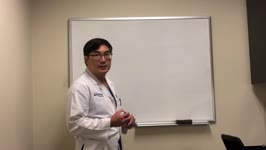 |
OPA1 - Optic Atrophy Gene | Dr. Lee lectures medical students on the OPA1 gene. | OPA1; Glaucoma; Cupping |
| 103 |
 |
Obstructive Sleep Apnea (OSA) and Neuro-Ophthalmology | Dr. Lee lectures medical students on obstructive sleep apnea (OSA) and neuro-ophthalmology. | OSA; Neuro-Ophthalmology; Pseudotumor |
| 104 |
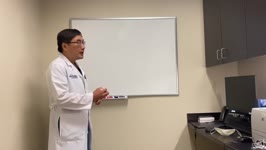 |
Occipital Seizures | Summary: - Occipital seizures o Key features > Bilateral > Simultaneous > Positive: small, geometric, colored circles > Lasts seconds to minutes > May or may not develop generalized seizure activity, confusion, eye movement/fluttering, gaze deviation > Can cause postictal/ictal blindness o Evaluatio... | Occipital Seizures; Seizures |
| 105 |
 |
Ocular Myasthenia Gravis | Dr. Lee lectures medical students on ocular myasthenia gravis. | Pathologies; Autoimmune |
| 106 |
 |
Ocular Neuromyotonia | Summary: • Neuromyotonia is increased tone of the muscle and comes from excess nerve transmission. • Ocular Neuromyotonia o Affects extra-ocular muscles o Excess nerve firing increases contraction of muscle o A "muscle spasm" of the extra-ocular muscle akin to Charley horse • Mechanism o Muscl... | Neuromyotonia; Spasm; Exotropia; Esotropia; Diplopia |
| 107 |
 |
Oculocutaneous Albinism | Dr. Lee lectures medical students on the subject of oculocutaneous albinism. | Melinin; Illumination Defects |
| 108 |
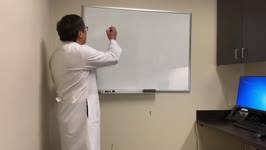 |
Oculogyric Crisis | Dr. Lee lectures medical students on oculogyric crisis. | Dystonia; Neuroleptics; Diagnosis; Oculogyric |
| 109 |
 |
Oculopalatal Myoclonus | Summary: • Clinical symptoms o Vertical oscillation of eyes o Vertical oscillation of palate • Pathophysiology o The brainstem is composed of the Guillain-Mollaret triangle -Comprised of dentate nucleus in cerebellum, inferior olivary nucleus in medulla, and the red nucleus in midbrain -Any lesi... | Oculopalatal; Brainstem; Lesion; MRI |
| 110 |
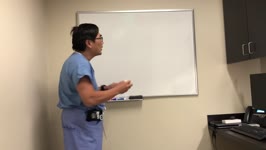 |
One and Half Syndrome | Dr. Lee lectures medical students on the subject of one and a half syndrome. | Pontine Syndromes; Dorsal Pontine Syndrome; Horizontal Gaze Palsy; Intranuclear Ophthalmoplegia; Dorsal Pons Lesion; Exotropia; Eight and a Half Syndrome |
| 111 |
 |
Ophthalmic Manifestations of Parkinsons Disease | Dr. Lee lectures medical students on ophthalmic manifestations of Parkinson's Disease. | Medical Condition; Ophthalmic; Parkinsonism |
| 112 |
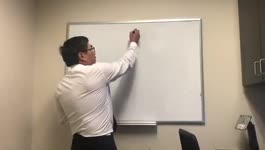 |
Optic Atrophy | Dr. Lee lectures medical students on optic atrophy. | Optic Atrophy; Neuropathy; Anatomic Structure |
| 113 |
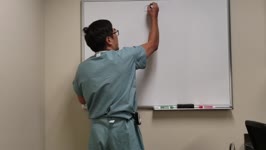 |
Optic Atrophy and Disc Morphology | Dr. Lee lectures medical students on optic atrophy. | Papilledema; Cupping; Atrophy |
| 114 |
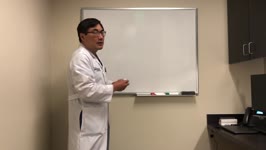 |
Optic Disc Drusen | Summary: ● Basics of optic disc drusen: ○ Name take from the German word, druse, meaning rock or crystal ○ Rocks of calcium and debris inside optic nerve > can cause optic neuropathy ○ Benign, but slowly progressive ○ Different from retinal disc drusen (seen in age-related macular de... | Optic Disc Drusen; Optic Neuropathy; Field Defects |
| 115 |
 |
Optic Nerve Sheath Fenestration | Dr. Lee lectures medical students on optic nerve sheath fenestration. | Optic Nerve Sheath Fenestration; Papilledema; Idiopathic Intracranial Hypertension (IIH); Non-arteritic Anterior Ischemic Optic Neuropathy |
| 116 |
 |
Optic Nerve Sheath Meningioma | Dr. Lee lectures medical students on optic nerve sheath meningioma. | Meningioma; Sheath; Radiation |
| 117 |
 |
Optic Nerve Tumors | Dr. Lee lectures medical students on optic nerve tumors. | Tumor; Ophthalmology; Glioma; Meningioma |
| 118 |
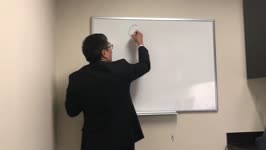 |
Optic Perineuritis | Dr. Lee lectures medical students on optic perineuitis. | Optic Perineuritis; Diagnosis; Granulomatous |
| 119 |
 |
Optic Tract Syndrome | Dr. Lee lectures medical students on optic tract syndrome. | Anatomy; Neuroanatomy |
| 120 |
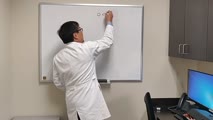 |
Orbital Apex Syndrome | Dr. Lee lectures medical students on orbital apex syndrome. | Pathologies; Anatomy; Neuroanatomy |
| 121 |
 |
Palinopsia | Summary: Palinopsia is defined as seeing an image repeatedly, or having a persistent recurrence of an image, after the visual stimulus has been removed. From "palin-" meaning "repeat" and "-opsia" meaning "see". • Hallucinatory Palinopsia - seeing an image after the stimulus has been removed from ... | Palinopsia; Clomiphene; MRI; Hallucination |
| 122 |
 |
Papilledema | Summary: Definition: papilledema is edema of the papilla-the head of the optic nerve easily visible when looking into the eye. Severity: Graded on the Friśen scale • Grade one: c-shaped halo of elevation nasally but the temporal border is intact • Grade two: 360 degrees of the elevation • Gra... | Papilledema; Frisen; MRI; Emergency |
| 123 |
 |
Paton's Lines | Summary: • Disc edema can lead to stress, causing deformation of the peripapillary region. o Stress lines: compressive, tensile, or shearing o When stress exceeds the tensile strength, rupture results • Paton's Lines = intraretinal folds, retinal folds, choroidal folds, or peripapillary wrinkles... | Disc Edema; Peripapillary Deformation; Disc Stress |
| 124 |
 |
Peduncular Hallucinosis | Dr. Lee lectures medical students on the subject of peduncular hallucinosis. | Peduncular Hallucinosis; Hallucinations; Release; Midbrain; Charles Bonnet |
| 125 |
 |
Persistent Postural Perception Dizziness (PPPD) | Today we're going to talk about a very strange condition which is PPPD. It stands for persistent, which means it has to be chronic. It's generally greater than three months in the duration or more, and it is a postural problem. What that means is they feel like they're gonna fall down, so they have ... | Persistent Postural Perception Dizziness; PPPD; Visual Vertigo |
